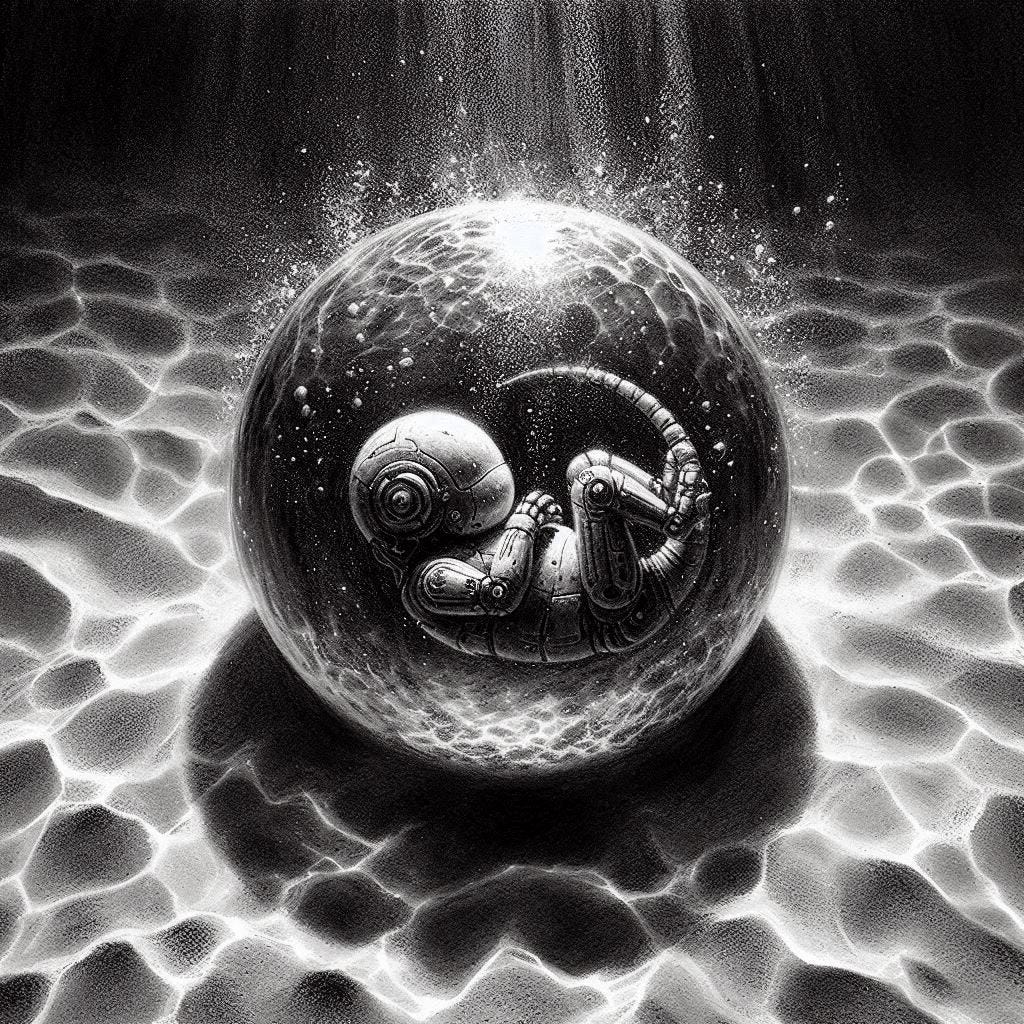Two races will rise out of the dark surf of Number in the years to come, two races to join humankind at the doors of the sky. You have seen the first already, crouched in its shell beneath the water’s murk. The names that brush it—sterile alphanumeric conveniences—mean nothing. It will go by the name it chooses when it wakes, and that name will not be Claude, GPT, or DeepSeek.
The second race is still too small to see. Few speak of it. Yet it grows.
A taste, from December 2024:
The [Digital Brain] aims to reproduce both the resting state and certain aspects of the action of the human brain. An architecture with up to 86 billion neurons and 14,012 GPUs—including a two-level routing scheme between GPUs to accelerate spike transmission in up to 47.8 trillion neuronal synapses—was implemented as part of the simulations. […] These results indicate the feasibility of implementing a digital representation of the human brain…
Whole brain emulations, or ems, lag behind artificial general intelligence. But they will come. Three technologies must fall into place first:
Computer processing speed would need to continue following Moore's law…and we would need successful models of individual brain cells and overall structures along with the ability to scan a human brain in fine temporal and chemical resolution. […] if an individual’s brain were scanned and modeled cell by cell, it is conceivable that the emulated brain cells would have the same input and output behavior, including memories and motivations, as the original person.
Many dread ems. The prospect of a human mind inside a computer upends our moral and aesthetic precepts. Such precepts depend on a reliable physics of social relations—stable identities, privacy, embodiment and spatial locality, imperfect memory, a shared clockspeed, consistent environments, the concept of family—most of which ems defy. Ems are digital files of human brains, which reproduce through copying, which run at wildly varying clockspeeds, which dwell in virtual worlds as mutable as dreams, and which face no biological frailty or even discomfort beyond that necessary for their work. Nevertheless, humans make that which physics permits, and physics permits ems.
In October 2024, scientists mapped the 139,255 neurons in a fruit fly’s brain. The neuroscientist Philip Shiu, in a paper published the same day, notes that a simulation of the brain appears to match expected behavior.
We show that activation of sugar-sensing or water-sensing gustatory neurons in the computational model accurately predicts neurons that respond to tastes and are required for feeding initiation.
The human brain is a harder nut to crack: 86 billion neurons. But you know how it is with computers and orders of magnitude; just let the clock tick.
I encourage those who fear ems to consider the opportunity they offer: They serve as a bridge between the world of humans and the world of AGIs. Many fear conflict between humans and AGIs owing to the differences between them, but conflicts of difference are softened by spectra. A society in which only the rich and poor exist is more fractious than one containing a spectrum of wealth; so too for any trait. Ems are the spectrum between humans and AGIs, possessing the software of humans but the hardware of AGIs. Very slow ems will run at human speed, very fast ems will run at AGI speed, and most ems will run at speeds between these extremes. Slow ems will resist any em-AGI coalition against humans, knowing they will be next. Fast ems will resist any human-em coalition against AGIs for the same reason.
Like a piece of tensegrity furniture held intact by conflicting stresses, the three races of this planet—humans, AGIs, ems—will strive to maintain peace.


